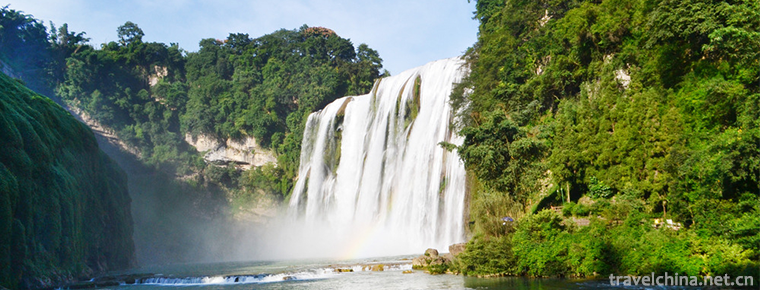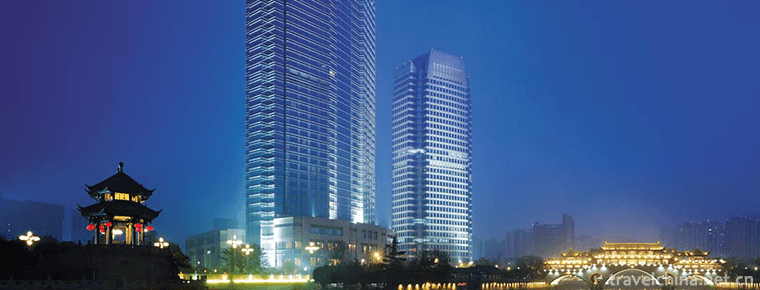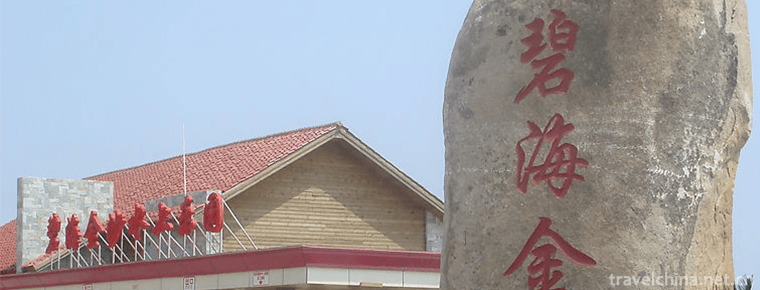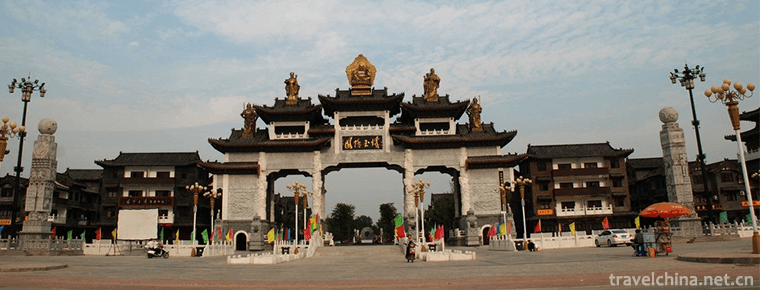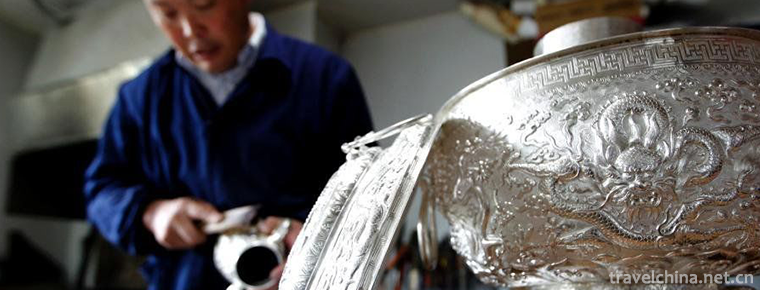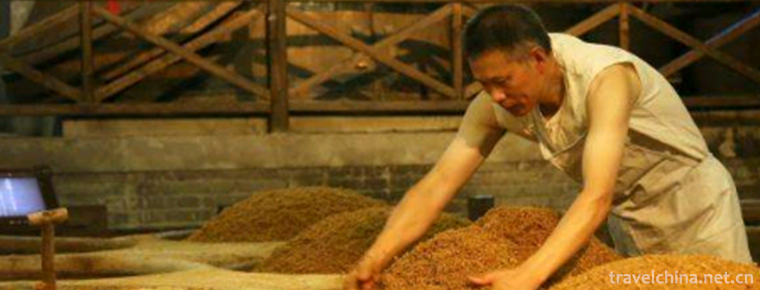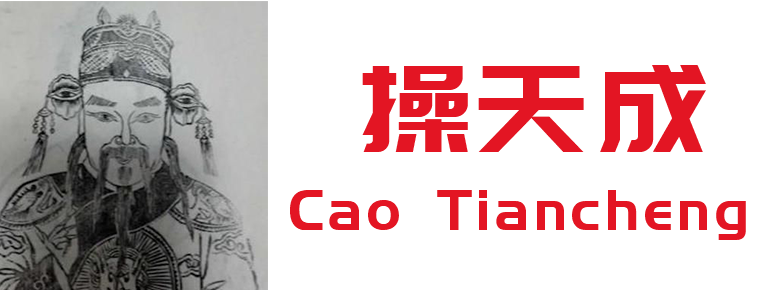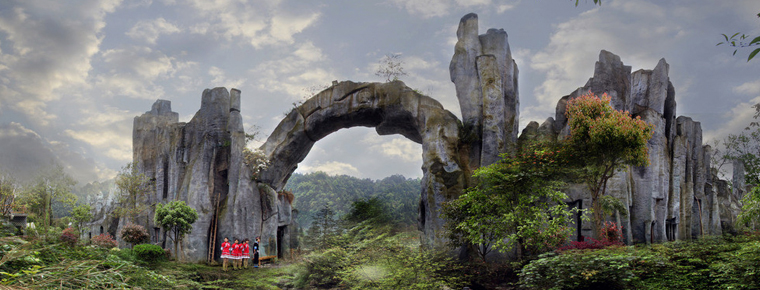Butter Flowers in Tar Temple
Butter Flowers in Tar Temple
The butter flower is a special technique for moulding figures with butter, which is one of the "three wonders of Tar Temple" (butter flowers, murals, embroidery).
Butter flower originated from Benjiao religion in Tibet. It is a small decal on the food supply. According to traditional Indian Buddhist customs, the tributes offered to Buddhas and Bodhisattvas are six colors, namely flowers, scents, holy water, tile incense, fruits and Buddhist lanterns. At that time, there were no flowers in the cold grass, so they had to use butter to sculpt flowers to present Buddhas, thus forming an artistic tradition.
On May 20, 2006, the butter flower of Tar Temple was approved by the State Council to be included in the first batch of national intangible cultural heritage list.
Historical Origin
Butter flower originated from Benjiao religion in Tibet. It is a small decal on the food supply. According to traditional Indian Buddhist customs, the tributes offered to Buddhas and Bodhisattvas are six colors, namely flowers, scents, holy water, tile incense, fruits and Buddhist lanterns. At that time, there were no flowers in the cold grass, so they had to use butter to sculpt flowers to present Buddhas, thus forming an artistic tradition.
Another legend says that Princess Wencheng went to Tibet in 641, took a 12-year-old statue of Sakyamuni and offered it to the Dazhao Temple in Lhasa. The Tubo people made flowers of butter for the worship of Buddha. Later, various Tibetan Buddhist monasteries used it successively as precious gifts of Buddha, and offering butter flowers became an important part of the prayer meeting of the first moon. In the process of development, the shape, variety, content and technology of butter flower are constantly changing.
In 1409, when Master Zongkaba first initiated the Great Prayer Fair at Dazhao Temple in Lhasa, he organized and produced butter flowers for the worship of large stereoscopic figures in front of Buddha. Since then, butter flowers have been introduced to Tar Temple, the birthplace of Master Zongkaba, where they have become habitual. It is said that the master who was born in Zongkaba, the place where Tar Temple is located, dreamed that thorns turned into bright lights, weeds into flowers, and tens of millions of pearls between bright lights and flowers shined brilliantly and magnificently. After waking up, he organized monks to use butter sculptures to reproduce their dreams and worship them in front of the Buddha on the 15th day and night. So before the 1950s, butter flowers had to be burned up before dawn on the night after the exhibition to mark the end of the flash in the pan.
In the first few months of the Spring Festival each year, butter flower artists knead pure white butter with various stone mineral dyes to shape various Buddha statues, figures, flowers, trees, birds, animals, and some also form religious stories, human life in heaven and myths. Every year on the 15th day of the first lunar month, when the bright moon rises and the Chinese lanterns begin to shine, the Tar Temple ushered in the annual Lantern Festival of Butter Lantern Festival. People make flowers, admire flowers and pray for good luck and peace, which has never stopped for hundreds of years.
Manufacturing Technology
Tar Temple is located in the Lotus Mountain south of Rushaer Town, Huangzhong County, Qinghai Province. It is 25 kilometers away from Xining. It is the center of Buddhist activities in Northwest China. The Tibetan name of the temple is "Subenxian Bahrain", which means "100,000 Buddha body Cishizhou", "Suben" for short, and "Tar Temple" in Chinese. The scale of the temple is magnificent. At its peak, there were more than 800 palaces, covering an area of 1,000 mu. It is not only one of the six major temples in China, but also enjoys a great reputation in Southeast Asia.
Butter is a kind of butter food of Tibetan and other herdsmen on the Qinghai-Tibet Plateau. It is a yellow-white oil put forward by milk after repeated stirring. This kind of grease is solidified, soft, delicate and highly plasticity. Butter flower is the unique sculpture art of the Tibetan nation. It is made of pure and delicate butter as raw material and mixed with various mineral pigments. It is exquisite in shape, beautiful and tender in color. Varieties of flowers and colors emerge in endlessly, full of auspicious and festive visual effects. Tibetan compatriots are convinced that those who sincerely and joyfully support Buddhas, Bodhisattvas and Dharma-protectors with butter flowers will benefit from calamities and gain peace and happiness, and will quickly achieve the three Bodhisattvas of Abedolo.
Brief Introduction of Technology
The production of butter flower in Tar Temple has a complete set of institutions and scientific procedures. There are two institutions specializing in making butter flowers in the temple. One is called "Jiezong Zengzha" and the other is "Gongmang Zengzha", commonly known as "Upper Flower Courtyard" and "Lower Flower Courtyard". The two gardens compete with each other. There are about 20 artistic monks in each academy. These artistic monks are usually admitted to the hospital at the age of fifteen or sixteen, and they have been engaged in art all their lives. The upper and lower flower courtyards are respectively presided over by the director (known as "palm ruler"), which decides the themes, composition and division of production of butter flowers. Butter flower art inherits the characteristics of Tibetan Buddhist art such as "refinement", "complexity" and "ingenuity". Its design and production have been handed down from ancient times by teachers and apprentices, and are generally carefully produced in a closed environment.
Because the two flower courtyards keep secret each other in subject matter and production technology, they have formed certain independent schools for a long time. They develop in the competition and show their achievements with new features and new techniques every year. Now the main inheritors of Tar Temple butter flower production techniques are Zassinima, Luozang Dragon Ball, Gazang Gacuo, Jiayang Xie Re, Zhihua Ruozi and so on.
Butter flower production cycle is long, the process is complex, from the preparation (Tibetan calendar October) to the formal exhibition (January 15) lasted three months. In order to make butter smooth and delicate, easy to operate, first of all, the butter should be dipped in ice water repeatedly rubbed, kneaded, impurities removed, toughening, rubbed into paste reserve. Before shaping, artistic monks of oil sculpture should first bathe in vows and perform religious rituals. After the ceremony, the palm ruler Lama and other artists jointly selected the theme of butter flowers, and then designed abdominal manuscripts. After carefully conceiving, planning and layout, they were assigned to masters who were good at figures, animals, flowers and architecture to lead their apprentices to work separately in shady rooms below zero temperature.
Production process
Firstly, the basic skeleton is carefully bound according to the content of the subject matter, and the skeleton is made up of soft leather bundles, hemp ropes, bamboo sticks, etc. in different shapes, that is, the basic model. The second is to shape the shape. The first material is to mix the old butter flowers and wheat straw ash, which were removed last year, and smash the stick into a hard and elastic black to shape the clay. The black clay is used to shape different shapes on the skeleton. Its plastic method is similar to surface or clay sculpture. After the basic shape is completed, the shape posture, size and the proportion of each other's overall structure must be revised and verified by the palm-ruler Lama before the final shape can be calculated. The second raw material is to knead various mineral pigments into paste-like creamy butter and blend them into colorful oil-plastic raw materials. Carefully paint the finished shape, apply eyebrows, shape flowers and stamens, and some special points also need to be decorated with gold, silver and dotted with dizzy dye. Finally, according to the overall requirements of the design, the butter flowers are installed in place one by one with wire, that is, fixed on several large wooden boards or special pots, high or low, pieces hanging in the air, and shaped in different sizes, ranging from several meters pavilions and pavilions, Bodhisattva vas vajra, to three or five centimeters of flowers, birds, insects and fish, to form a complete three-dimensional layout, lifelike and lifelike.
The finished picture of butter flower should be tilted forward about 20 degrees. First, it is convenient for the viewer to look up a little and see the panorama. Second, it is afraid of the butter flower melting from top to bottom, and the melt above will make the shape under the flower. Generally speaking, the prepared butter flower is rebuilt every one or two years because of the influence of temperature.
Because the melting point of butter flower is very low, it will deform at 15 degrees and melt at about 25 degrees. In order to prevent the influence of body temperature on butter flower, artistic monks must soak their hands in biting snow water before kneading. In order to prevent the hand from warming up, they must soak ice water and grasp ice cubes from time to time to keep their fingers cold. Therefore, every artistic monk suffers from different degrees of arthropathy, even disability. Without devotion to Buddha and devotion to religion and art, it is very difficult to achieve. Year after year, in the dark flower house, the cold fingertips of Lama monks are flowing with warm colors belonging to spring and dreams. In their hearts, butter flowers are talking flowers, telling the world's longing and the colorful world of Tibetan Buddha, telling about beauty and yearning.
Although the butter flower is called "flower", its subject matter is diverse and its content is rich. It mainly consists of divine Buddhist ancestors, military generals, birds and animals, flowers, birds, fish and insects, mountain trees, flower bonsai, terraces and pavilions and so on. It is simple and handy, with scattered perspective of large layout, partial focus perspective, and ingenious use of three-dimensional space to form a complete three-dimensional picture.
Due to the limitation of time and space, butter flower color sculpture is especially good at expressing complex plots in large scenes. It inherits the processing method of "different times and places" in Buddhist murals. In a limited space, dozens of stories can be interlaced and interlaced in a picture in the form of comic strips. It looks complex but not chaotic and integrated, such as the life story of Sakyamuni, a large butter flower. 。 The large-scale butter flower masterpiece Princess Wencheng, produced in the 1980s, is mainly composed of nearly 300 characters and geographical backgrounds of Chang'an, Riyueshan, Jianghe Yuan and Lhasa. It is coordinated with exotic flowers and plants. The historical scene of harmony and friendship between the Han and Tibetan nationalities can be vividly reproduced and is very spectacular.
Inheritance Significance
Butter flower, a pure religious art advocating Buddhism, has gradually evolved into a festival art exhibition in Tar Monastery. Religious meaning has been weakened and many folk arts have been incorporated into it. The contents and themes of butter flowers are gradually becoming popular, and even the Tian'anmen Gate has been shaped. Previous single-sculpture techniques have gradually developed into a combination of standing and floating sculpture, single-sculpture and combination, flower shelf and pot sculpture as a foil to a variety of forms, causing more and more attention of Chinese and foreign art fans. But at the same time, the inheritance of butter flower technology is also facing some difficulties. After the religious reform in 1958, religious activities in Tibet ceased and monks were deported from the temple. By the time the butter flower production was restored in the 1980s, most of the famous artistic monks had passed away. Butter flower works are easily deformed and can not be preserved for a long time, which makes it difficult for traditional techniques to get a fixed model in the inheritance. We should further strengthen the protection of butter flower making techniques, so that this distinctive national handicraft can remain in the world for a long time.
The state attaches great importance to the protection of intangible cultural heritage. On May 20, 2006, the intangible cultural heritage was approved by the State Council and listed in the first batch of national intangible cultural heritage list.
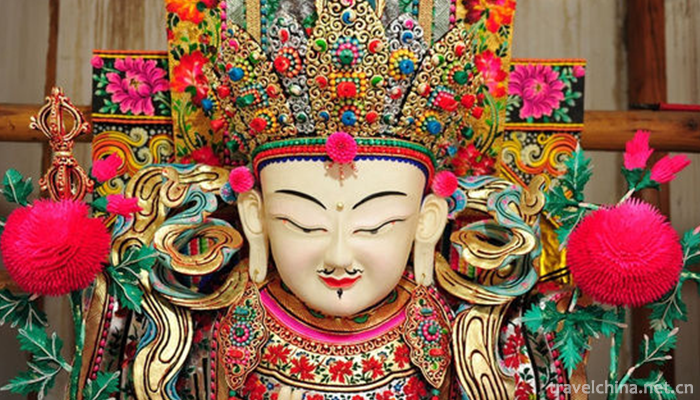
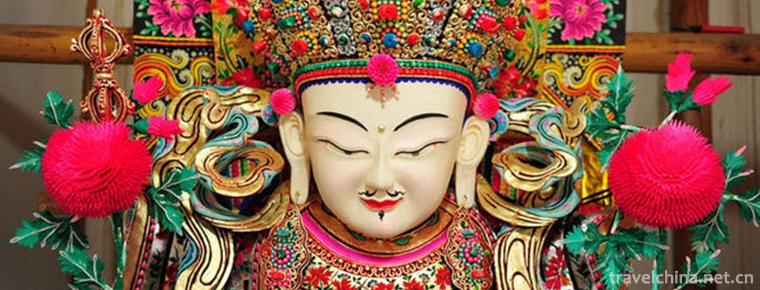
Butter Flowers in Tar Temple
-
Crab congee
crab porridge is a snack in Macao. Macao is located at the junction of saltwater and fresh water, and the crab produced is delicious. Water crab porridge...
Views: 233 Time 2018-10-31 -
Huangguoshu Waterfalls Scenic Area
Huangguoshu Scenic Spot is a key national scenic spot, located in southwest Guizhou Province, 128 kilometers away from Guiyang City, the capital of Guizhou Province
Views: 218 Time 2018-12-12 -
Chengdu Shangri La Hotel
Chengdu Shangri-La Hotel belongs to Shangri-La Hotel Group. It was officially completed and put into use on May 20, 2007. The hotel is located at No. 9 Binjiang East Road, Chengdu City
Views: 173 Time 2018-12-16 -
Bihai Jinsha Water Paradise
Bihai Jinsha Water Paradise (i.e. Coastal Recreation Park, abbreviated as "Water Paradise") is built outside the flood control wall, along the flood control wall 1313 meters
Views: 472 Time 2019-01-03 -
International Jade City
International Yucheng is located in the south of Shifosi Town, Zhenping County, Henan Province, on the south side of Yuyuan Avenue, south to Liulu Highway, east to Erlong Road, north to Longxiang Road
Views: 160 Time 2019-01-13 -
Silver and Copper Ware Making and Gold smelting Techniques
Silver and bronze wares production and gold mincing skills, local traditional skills in Huangzhong County, Qinghai Province, one of the national intangible cultural heritage.
Views: 223 Time 2019-07-13 -
Brewing Techniques of Zhenjiang Hengshun Fragrant Vinegar
Zhenjiang Hengshun aromatic vinegar brewing technology production chooses high-quality glutinous rice produced in the "land of fish and rice" as raw material, using solid-state layered ferme
Views: 120 Time 2019-07-25 -
Cao Tiancheng
Cao Tian Cheng, Sui Dynasty people. According to the history of Sui Dynasty in the twenty four histories, Cao Tian is also known as "Tiancheng". Ask for advice Bo Yang, Jiangxi. At the end o
Views: 218 Time 2019-09-14 -
Anhui University Of Technology
Anhui University of Technology is located in Anhui province. Ma'anshan The city is a multi-disciplinary university characterized by industry and industry. Ministry of science and technology With the s
Views: 306 Time 2019-10-10 -
Yamugou scenic spot
Yamugou scenic spot is located on the Bank of Taiping River (a famous scenic spot in Guizhou Province) in Jiangkou County, Tongren City, Guizhou Province, adjacent to Fanjing Mountain (National Nature Reserve, China's top ten famous summer resort).
Views: 172 Time 2020-10-13 -
Deyang medical and health
By the end of 2018, Deyang City had 2819 health institutions (including village clinics), including 7 centers for Disease Control and prevention, 7 health supervision institutions, 1 Emergency Center (station), 6 maternal and child health centers,
Views: 338 Time 2020-12-14 -
Neijiang cultural undertakings
By the end of 2019, there are 121 performing arts venues in Neijiang City, including 6 cultural venues. There are 5 museums, 5 cultural relics protection and management institutions, 7 national key cultural relics protection units, 42 provincial cultural relics
Views: 301 Time 2020-12-16

